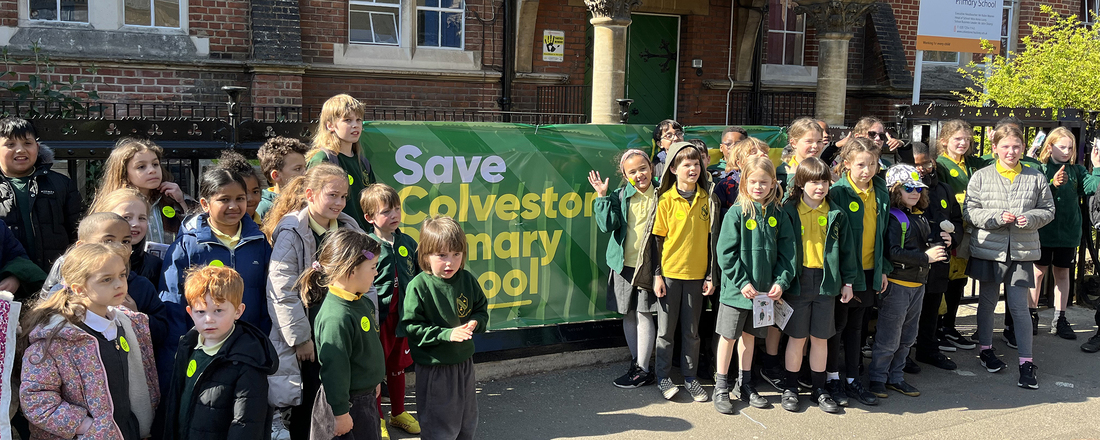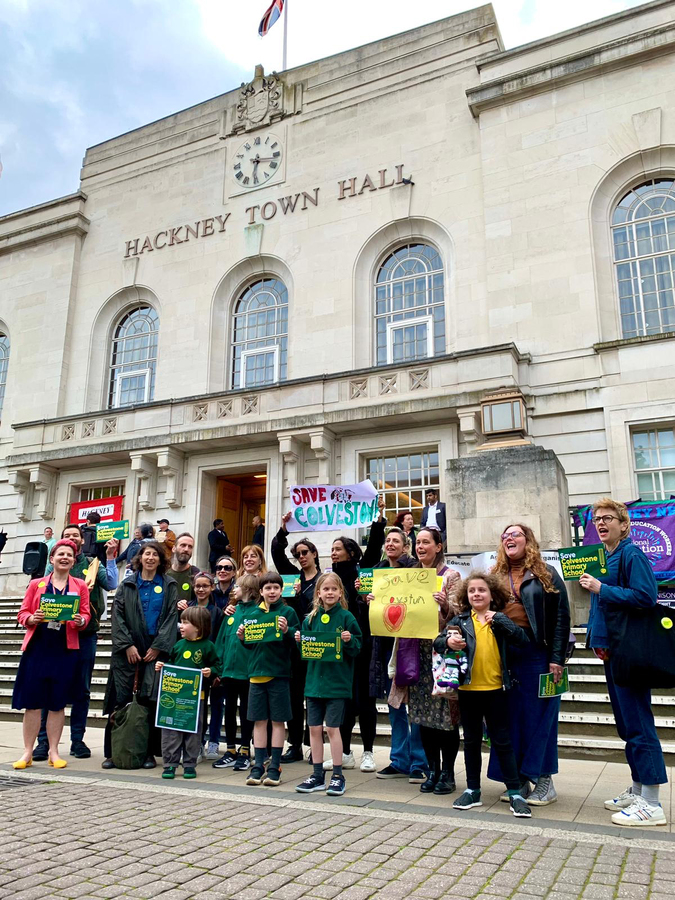Get updates from The Developer straight to your inbox Yes, please!
In a death spiral: Is London becoming a city without kids?
With dozens of primary schools across the capital threatened with closure, London’s pupil shortage crisis is being blamed on falling birthrates and Brexit, while others say it’s the long-tail effect of rising house prices and gentrification, writes Ella Jessel

De Beauvoir Primary School has taught local children from its Dalston site for over 100 years. But next September it will close, after just ten children joined reception this academic year.
Student rolls at the Ofsted-rated ‘good’ school have steadily declined, and with funding allocated on a “per pupil” basis, empty seats means the school is no longer “viable”. It’s a crisis affecting schools across Hackney, and many other inner London boroughs.
Hackney Council’s plan to tackle the problem – which is meeting with resistance from local parents – is looking to close or “merge” six of its struggling primaries. Camden has already closed four, Southwark has 16 at risk while Lambeth could also merge 16 by 2025.
According to recent figures by London Councils, 87,277 pupils applied for a primary school place in autumn – a 2.67 per cent decrease from the previous year.
“The lack of accessible, affordable, secure housing is a direct contributing factor to school closures”
But what is behind the plummeting numbers? London’s birth rate, which has fallen 17 per cent between 2012 and 2021, is cited as one obvious reason. Other factors include Brexit, the post-pandemic change in working practices, and soaring housing costs pushing families to the capital’s outskirts.
It’s a concerning trend, according to planning solicitor Nicola Gooch. She points to a recent briefing note by planning consultant DLP, which tracked the correlation between house price increases and fertility rates.
“The lack of accessible, affordable, secure housing is a direct contributing factor to school closures”, says Gooch, as younger people either move out of cities, delay having children or choose not to have children at all.
“To call this concerning would be an understatement. If housing policies are playing a part in inadvertently surpressing birth rates, then this demographic shift is only going to become more pronounced - particularly in urban areas.”
In addition to rising costs, structural shifts in London’s demographics – and rampant gentrification – are at play.
Boroughs could enter a “death spiral” whereby fewer families will be able to find schools, pushing more families away
Some councils have found themselves in the firing line over the role their own regeneration policies have played in displacing local communities. At a council meeting in Southwark last year Makeda Williams-Pinnock, the headteacher of an Elephant and Castle primary blamed collapsing pupil numbers at her school on the area’s rapid redevelopment.
Victory Primary School is just a five-minute walk from the Heygate Estate where 1,200 council homes were demolished and replaced with just 92 social rent homes.
“All that I can really see growing in the locality is lots of bright shiny buildings because the indigenous population has been decanted far and wide,” Williams-Pinnock told the meeting, according to a report by local paper Southwark News.
Williams-Pinnock also pointed to national welfare policies, pointing out that the housing benefit cap for a single person with kids didn’t cover the monthly cost of local accommodation.
“If you look at pupils as spreadsheet data, you could fit all 120 pupils in and that school would be saved. But if parents don’t send kids there, it won’t fix that problem”
In Hackney, many local parents think the council is taking the wrong approach. Parents are campaigning to save Colvestone, a small one-form entry primary in Dalston which faces moving its pupils to the larger Princess May Primary nearby. Both schools have surplus places, and Colvestone has a deficit of £560,000.
Mike Cooter, a parent with a child in reception, said the merger plan came as a “huge shock”, because the council had already worked with the school on a plan to address dropping numbers, and after a difficult period the school was under new management.
Cooter says according to a parent survey Princess May did not feature in many families’ top six choices. It sits on a main road, where pollution is 45 per cent higher than at Colvestone, says Cooter, which has more of a “village-like” feel.
“If you look at pupils as spreadsheet data, you could fit all 120 pupils in [Princess May] and that school would be saved. But if parents don’t send kids there, it won’t fix that problem.” He also points out hundreds of family homes are planned as part of the Dalston Plan, with Colvestone likely to be needed for the future influx of new families.
However the council argues demand for Colvestone remains “unsustainably low”, and it had given all the support available to try to deal with its falling rolls, including underwriting some of its financial deficit. “None of the measures taken so far have been sufficient,” its website reads.
“This year alone, primary schools in Hackney are set to lose more than £30m in funding compared to what they would be entitled to if classrooms were full”, Hackney’s deputy mayor and education chief Cllr Anntoinette Bramble told The Developer.
“Previously there was a large proportion of families in inner-London who were council tenants”
"A school with insufficient funding is an unstable learning environment, and will almost inevitably see performance and standards fall over time. This is why we are now looking at some of the schools affected the most, proposing the closure of two schools and the merger of four others into two.
"We know that schools have very close connections to their local area and communities, and that’s why proposing closing and merging schools is one of the most difficult decisions we could make, and not one we would look at unless we had no other choice. But the quality of education for our children must take priority."
According to Ian Gordon, an emeritus professor in human geography at the LSE, some schools are seeing the “cumulative impact” of shrinkage going further back in time. Indeed, Hackney’s data for De Beauvoir Primary shows pupil numbers have fallen steadily every year from 361 in 2015, to just 115 this academic year.
The drop-off is an indicator of the city’s “continuing gentrification”, he says, adding that in areas like Islington this started as far back as the 1950s, whereas in Hackney it only really took off after the arrival of the overground in the late 2000s when the area became more desirable and accessible.
“The London story is about people moving from inner boroughs to outer boroughs, and some moving further afield. This is normal, but it has become accelerated.”
The drop-off is an indicator of the city’s “continuing gentrification”, he says, adding that in areas like Islington this started as far back as the 1950s
Contributing factors, according to Gordon, are a worsening in housing affordability since the financial crisis as London’s wealthier residents invested more heavily in housing, and the siphoning of council housing under Right to Buy.
He adds: “Previously there was a large proportion of families in inner-London who were council tenants. Now there’s a smaller and smaller core of council tenants who are outside the market and another generation who can’t get into that secure accommodation.”
Another part of the story that has been overlooked, says Gordon, is that wealthier families moving in are sending children to independent schools. In Camden, where four state schools have closed, 40 per cent of children are privately educated.
Free schools and academies are funded directly by central government and so insulated from the crisis
There are other local pressures too. In Hackney, the council says its council schools are contending with competition for places from four free schools and academies (“agreed and championed by the DfE)” and set up during a previous spike in pupil numbers.
Despite also facing falling pupil numbers, free schools and academies are funded directly by central government and so insulated from the crisis. Some London faith schools have also been impacted, such as the 300-year-old Archbishop Tenison’s School in Oval, which announced in April it would close at the end of the school year.
Yet it is the local authority schools that are so far bearing the brunt in places like Hackney, leading to fears the borough’s state education provision will slowly erode. According to Cooter, there could be more closures on the horizon, and a risk of a “death spiral” in the borough, whereby fewer lower income families will be able to find schools to send children to, simply pushing more families away.
“The schools that are closing are those that are more diverse, have a higher percentage of pupils with Special Educational Needs and a higher proportion of lower income students on free school meals”, he says.
The disappearance of London schools is a worrying trend. As Gooch says: “If [Bogota mayor] Enrique Peñalosa is right and children are a kind of indicator species for cities, then their disappearance from central London should be ringing major alarm bells.”
If you love what we do, support us
Ask your organisation to become a member, buy tickets to our events or support us on Patreon
Sign up to our newsletter
Get updates from The Developer straight to your inbox
Thanks to our organisation members
© Festival of Place - Tweak Ltd., 124 City Road, London, EC1V 2NX. Tel: 020 3326 7238
© Festival of Place - Tweak Ltd., 124 City Road, London, EC1V 2NX. Tel: 020 3326 7238

